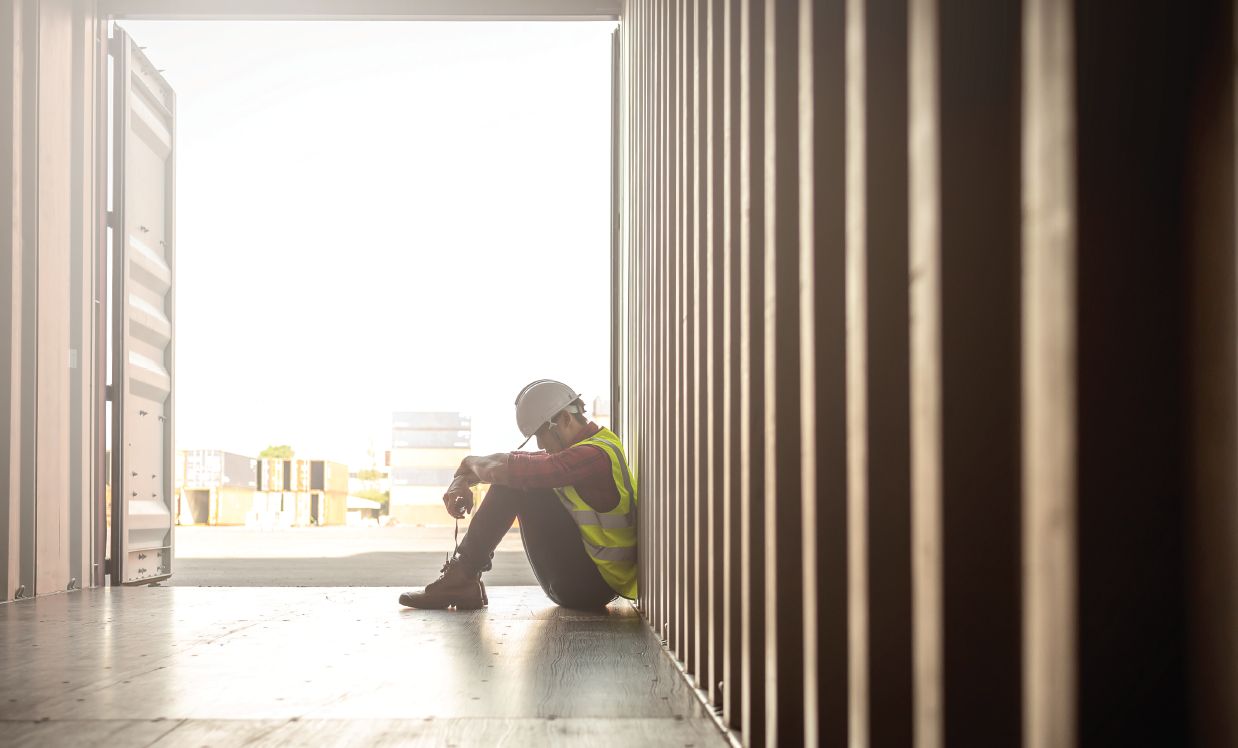St. Stanislaus Catholic Church represents the faith and devotion of Polish Catholic pioneers who originally settled in the southside of Milwaukee. In 1866, 30 families bought a small brick church and dedicated it to St. Stanislaus, a beloved bishop of the Polish people.
With the explosion of the Polish population in the city during the next few years, a bigger church was needed. In 1872, land was secured at the corner of Fifth and Mitchell streets. Each family in the parish was assessed $30 to secure a loan to build the church. Back then, fishermen earned $1 per day, so the immigrants’ financial sacrifices to secure a church for future generations was impressive and humbling.
A year later, a cream-colored brick building was designed and constructed to reflect the architecture of eastern European churches. In 2016, the church underwent extensive renovations, but dome work was not in the plans until an anonymous donor generously paid for the roofing project in 2018.
“Our prayers were answered, and we moved forward with contracting with F.J.A. Christiansen Roofing, a Tecta America company, Milwaukee, to restore the domes to their original copper brilliance,” says George Baird, abbé for St. Stanislaus Catholic Church.
History of the domes
St. Stanislaus Catholic Church was built with two towers 167 feet above street level on the building’s east side. A third, smaller tower was placed above the sanctuary on the west end of the roof. All three towers had domes clad in copper. The east domes had gables on each side, and the west dome had columns to expose a bell. The copper on the domes eventually weathered to patina.
In 1966, in preparation for the church’s 100-year anniversary, the building underwent enormous renovations, including significant changes to the domes. The gables and columns were removed from the domes, providing a more streamlined appearance, and the copper on the domes was replaced with aluminum-covered steel with 23-carat gold leaf. By the late 1970s, the gold leaf dulled, leaving the yellow-based paint exposed.
The domes remained in this state until December 2018 when the F.J.A. Christiansen Roofing crew began restoring them.
Inspection and removal
A major element of the project was historical accuracy. “F.J.A. Christiansen Roofing’s knowledge of architecture of the time period when the church was built allowed for easy permitting with the city’s historical building commission,” Baird says. “The experience and confidence of the company’s production team saved us significant funds.”
Before working on the two main upper domes, the crew investigated how the domes were constructed and set in place.
“Upon inspection of the existing construction, we determined the upper domes likely were constructed off-site and hoisted into place,” says Don Walter, president of F.J.A. Christiansen Roofing. “After discussing our findings with the building owner’s project team, the team recalled a video that documented the installation. The original film, now on DVD, showed a dome being raised to the roof when the domes previously were restored. We then worked to reverse-engineer the hoisting process, which led us to learn how to remove the crosses to access the structural framing for the lowering process.”
Workers detached and removed 6½-foot-tall sheet-metal crosses from each dome. Faced with maneuvering the crosses in windy conditions, crew members wrapped a strap around each cross to stabilize them into a manlift while being detached from the domes.
After the crosses were removed, workers threaded a cable through an existing vertical pipe centered on the dome and then attached it to a turnbuckle created to lift the dome structures safely. Team members unbolted each dome, lifted them off the existing support tubes and lowered each one to street level. The crew temporarily sealed the support tubes to prevent water infiltration until the project could be completed.
“It was an extremely delicate, deliberate process,” says Jeff Keller, superintendent for F.J.A. Christiansen Roofing. “The street in front of the church was closed for two days, with one tower taken down each day.”
With each dome’s “legs” secured using a cast-iron frame specially designed and fabricated for the project by F.J.A. Christiansen Roofing craftsmen, each structure was carefully laid on a flatbed truck and transported to the company’s off-site shop for repair and restoration.
“The legs had to remain in exactly the same position, so when we replaced the structures, the legs could be repositioned onto their support tubes,” says Todd Samuel, project manager for F.J.A. Christiansen Roofing.
This process also required careful, precise maneuvering to remove each dome from the flatbed truck and stand them upright for restoration work. Once upright, team members erected scaffolding on one side of each dome, and the domes were rotated to access each section.
Restoration
Despite their age and constant exposure to the elements, the structures were in relatively good condition, allowing them to continue to serve as a substrate for resurfacing. The domes previously were resurfaced when the original copper sheeting was replaced with aluminum-covered steel.
Workers observed some minor structural steel surface rust, so they applied an epoxy coating to inhibit further rust. Then, they installed new steel framing and wood sheathing to serve as a substrate for new copper cladding.
“Working on the upper domes in our off-site shop not only allowed work to progress through winter and inclement weather but it also provided a controlled environment to perform many of the most intricate details for the project,” Samuel says.
Among those details were round columns with spun caps and bases, an ornate soldered cornice and a decorative cap piece.
While working on the upper domes off-site, another crew began on-site work on the lower domes on the two east towers. Team members removed the weather-worn aluminum panels, replaced rotted wood with new wood and applied Firestone CLAD-GARD™ self-adhering underlayment followed by red rosin paper.
Next, workers installed a copper sill and diamond-shaped, 20-ounce 2- by 2-foot copper panels custom-fabricated by F.J.A. Christiansen Roofing craftsmen.
While the F.J.A. Christiansen Roofing crew worked on the lower domes, masonry contractors were working below them, requiring coordination with other trades to access work areas and implement safety measures to protect workers, such as netting to catch material that might fall from dome work.
“We worked diligently with church representatives and masonry contractors throughout the project,” Walter says. “Periodic inspections and coordination with other parties helped refine our safety approach and meet unforeseen challenges including unauthorized site access, excessive wind and shared workspaces. We developed a site-specific safety plan to identify potential hazards and ways to mitigate those risks.”
Team members also worked with the scaffolding company to incorporate electric winch systems into the scaffolding design. The winches provided a means to safely lower torn-off material and debris to ground level and hoist new materials to working platforms around the lower main domes.
Installation
Although it took two days to remove and lower the upper dome structures, replacing them was accomplished in one day.
“The reinstallation process was planned for two days, but the first dome structure installation was performed so efficiently, we made the call to install both on the same day,” Walter says. “The entire team came together, working from sunrise to sunset to make the lifts happen safely and successfully, to the great elation of the building owner’s representative.”
The parish priest blessed the new gold-leafed copper crosses before installation. Team members then wrapped the crosses in foam padding and hoisted them to the roof using a boom crane. To prevent fingerprints on the crosses, workers wore white gloves while positioning the crosses into place atop the domes.
Workers placed a sheaf of documents inside the cap piece of one of the main domes as a 100-year time capsule, a fun surprise for a future generation of roofing professionals to discover.
PROJECT NAME: St. Stanislaus Catholic Church
PROJECT LOCATION: Milwaukee
PROJECT DURATION: Dec. 5, 2018–Dec. 20, 2019
ROOF SYSTEM TYPE: Copper
ROOFING CONTRACTOR: F.J.A. Christiansen Roofing Co., a Tecta America company, Milwaukee
ROOFING MANUFACTURERS: Canadian Brass & Copper Co., Concord, Ontario; Firestone Building Products Co. LLC; Nashville, Tenn.
West dome
Except for the cross and lantern elements removed and replicated off-site, all the work on the west dome was performed on-site. Minor structural repairs were made before recladding the dome in new copper. The church bell remained operational for the project’s duration, so crew members had to be mindful of moving parts while working.
The west dome is smaller than the other domes, but its ornamentation is more intricate and includes curved copper arches. F.J.A. Christiansen Roofing craftsmen collaborated with a team of ornamental sheet-metal fabricators from Heather + Little Ltd., Markham, Ontario, to produce the copper elements.
“We were challenged by the complexity of the cupola, crosses and miscellaneous radius flashings and cornice pieces that we were tasked to produce in copper,” says Marc Jamieson, vice president, sales and projects, for Heather + Little. “In cooperation with F.J.A. Christiansen Roofing’s team, we improved the custom diamond-shaped shingles. Everyone rose to the occasion, and we were more than pleased with the results.”
After the copper cladding was complete, team members used a crane to lift a new gold-leafed copper cross to the roof and reinstalled it on the dome, complementing the new crosses on the east domes.
Back to life
In December 2019, the west dome was completed, bringing the St. Stanislaus Catholic Church roofing project to a close. The congregation aimed to have all the work done before Christmas mass services, and this deadline successfully was achieved by the F.J.A. Christiansen Roofing team, along with no safety incidents.
“During the entire project, the production team worked with absolute professionalism, providing the highest level of craftsmanship,” Baird says. “Safety was never compromised, which was critical. I can give only praise to the F.J.A. Christiansen Roofing team for a job well done. The project exceeded everyone’s expectations.”
Although the crew faced logistical challenges removing the large dome structures from the building, the domes and all building elements successfully were restored to historical details. Thanks to the dedicated team at F.J.A. Christiansen Roofing, a Milwaukee landmark has been restored for all commuters driving on Interstate 94 to see.
“This project was a true company effort,” Walter says. “From our safety manager, operations manager and office management to the mechanics team, warehouse personnel, multiple drivers and others. Everyone helped to make this project a true success.”
For its work on St. Stanislaus Catholic Church, F.J.A. Christiansen Roofing received a 2021 Gold Circle Award from the Roofing Alliance in the Outstanding Workmanship: Steep-slope category.
CHRYSTINE ELLE HANUS is Professional Roofing’s associate editor and an NRCA director of communications.



